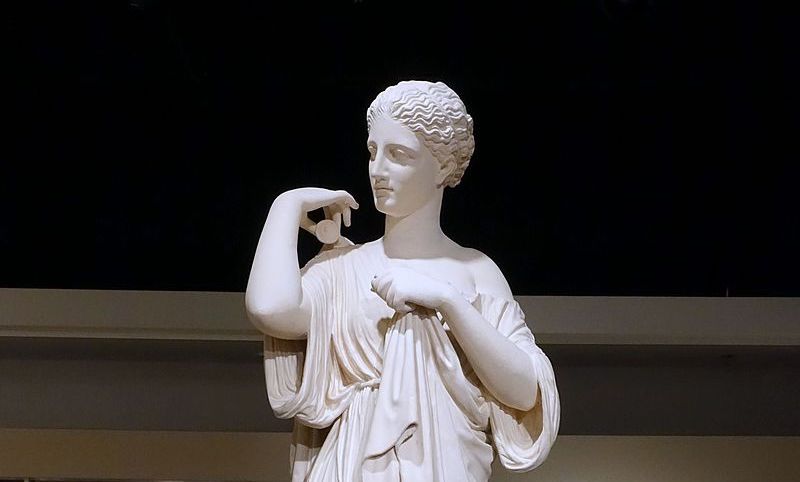The global tradition of blowing out candles which adorn a birthday cake to be shared with well-wishers might be rooted in an ancient Greek votive ritual to honor the goddess Artemis, the female archetype associated with childbirth, wildlife, and the moon.
The Ancient Greeks started making cakes that were modeled after the moon as tribute to Artemis, the goddess of the moon. The cakes were circular and then lit with candles to shine like the moon, notes Columbia Daily. Tradition tells us that a long-lost connection with devotional cakes to Artemis may survive today as part of the most popular celebratory habit in the Western world and beyond.
The goddess of childbirth
Although referred to as a consecrated maiden, like fellow goddesses Athena and Hestia, Artemis was worshipped as one of the primary goddesses of childbirth and midwifery.

Deaths during pregnancy were attributed to her, and dedications of clothing to her sanctuaries after a successful birth were a common habit in the Classical era, according to Susan Wise, PhD, the author of “Childbirth Votives and Rituals in Ancient Greece.”
The Greek poet Callimachus in his “Hymn to Artemis” recites how the young goddess asked her father, Zeus, among other things, to offer her the ability to help women in the pains of childbirth.
Several festivals were devoted to Artemis throughout the year in ancient Greece. During the feast called Elaphobolia, celebrated in March and April of every year in Athens and Phocis, the goddess was offered cakes shaped like deer, one of her sacred symbols. According to the ancient historian Pausanias, these were called ‘elaphos,’ the Greek word for deer.
During the second festival, a cake was offered as part of a ritual by young men and women reaching puberty in the area where Mikrolimano is today.
Ancient Greek “ammilos” may be first birthday cake
The most interesting tradition in relation to birthday cakes as we know them today, however, is the so-called ammilos votive cake. Its speculated etymology is probably the strongest link we can obtain with the contemporary symbolism of the birthday cake.
In another festival devoted to Artemis, the Mounikhia, she was offered cakes made from dough, honey, and sesame seeds. The cakes were taken to the temple where they were presented between two burning torches, called “amphiphontes,” representing the East and the West; this was yet another representation of Artemis as a moon goddess, as the round cake of the moon was between flames, representing the setting and rising sun.
As the owners of the Greek cooking and pastry academy Ammilos state, “The ancient Greeks accompanied the celebration of the completion of an additional year of life with a sweet, dedicated to the Goddess Artemis, named ammilos.”
Candlelight symbolized stars and the moon
The owners state that our typical birthday celebrations have roots tied back to these rituals “with the singing, burning candles and extinguishing [the candles] at the end of it.” The candles that were placed in the sweet in order to glorify the goddess symbolized the stars and the moon, which were associated with the goddess of hunting.
“Then,” it is said, “the cake was transferred to the temple of Artemis, and there, after they made a wish, [they] put out the candles, believing that the smoke carries the prayers to the heavens.”
Although cakes, especially ceremonial, did exist in other ancient civilizations, such as Egypt and China, it is considered that cake making—like so many other concepts—was passed to the Romans and the Western world through the Greeks.
In the original text of Deipnosofistes, there is an extensive list of all cake-making in Greece and the colonies, stating that bakers on Samos were masters in cake-making while in Sicily, they made local variations of the confection.
All cakes there were called “plakountes” (flat-tops) and were made from wheat, cheeses, honey, and nuts. Some were made in layers, such as today’s elaborate pastries in Greece.
Written references to the tradition of blowing out the candles were first documented in Switzerland’s Folklore Journal in 1881 where there is a depiction of a birthday cake as having lighted candles that correspond to each year of life. These candles were required to be blown out, individually, by the person celebrating his or her birthday.
Ancient Rome borrowed many customs from Greece
It certainly wasn’t just the ancient Greeks who celebrated milestones with sweet cakes, however. Ancient Rome also had their traditions, and it’s believed that the original birthday cake originated from their celebrations after they adopted it from the Greeks.
Rather than just celebrating birthdays, though, ancient Romans were known for celebrating all things with cake, including weddings. Birthday cakes, made with honey, flour, nuts, and yeast, commemorated only the birthdays of high-ranking men who were well-regarded citizens of Rome.
As a rule, it was men’s 50th birthdays which were most often celebrated there. According to information from the magazine Food & Wine, the birthdays of females were not celebrated until the 12th century in Europe. Many centuries later, children would be the first to have their birthdays celebrated in what is now Germany during the Middle Ages.
Fortunate children there enjoyed birthday cakes that resembled those of the ancient Greeks with the exception of the birthday candles. Rather than adding them at the edges of the cake, as had been the case in propitiations to the goddess Artemis, candles were added for each year of the child’s life.
Birthdays celebrated around such cakes, which had a candle for each year of their age plus one for the future, were called Kinderfeste. Oddly enough, however, the Kinderfeste cakes were given to the children on the mornings of their birthdays with the candles lit, and they were not blown out until after dinnertime.



